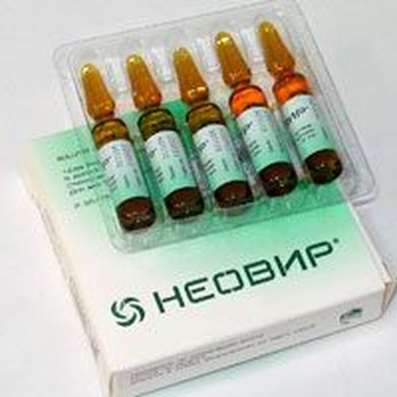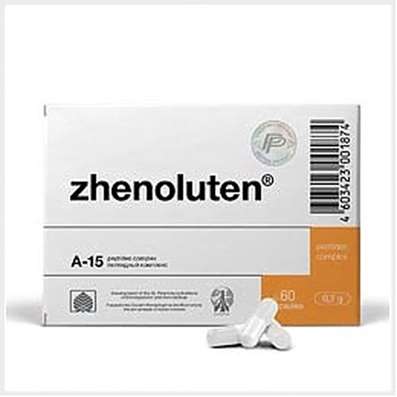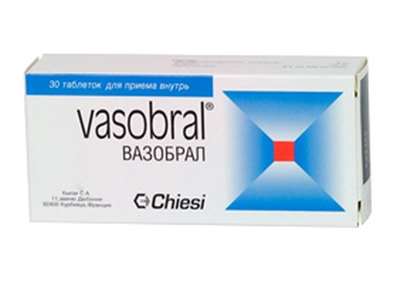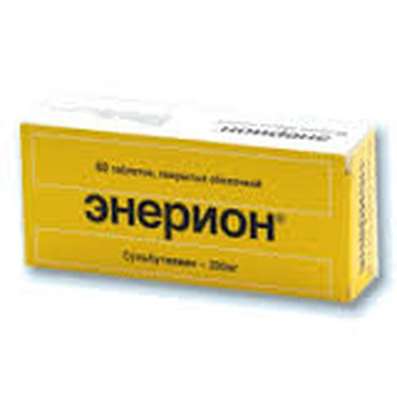Instruction for use: Relanium
I want this, give me price
Trade name of the drug – Relanium
Active substance: Diazepamum (genus. Diazepami)
Chemical name: 7-Chloro-1,3-dihydro-1-methyl-5-phenyl-2H-1,4-benzodiazepin-2-one
Dosage Form: solution for injection
Composition of Relanium
The solution for the on / in and / m the introduction of 1 ml
diazepam 5 mg
Additional ingredients: propylene glycol; ethanol; benzyl alcohol; sodium benzoate; acetic acid; water for injections.
in 2 ml ampoules; 5 in box 10 or 50 vials.
Description of Relanium
Clear, colorless or yellow-green liquid.
Pharmacotherapeutic group: Anxiolytics
ATX Code
N05BA01 Diazepam
The nosological classification (ICD-10)
A35 Other forms of tetanus: Rabies (hydrophobia); Klostridioz wound; Muscle spasms in tetanus; Tetanus; Tetanus is local; Tetanus.
F10.4 abstinent state with delirium: Delirium tremens; Delirium tremens alcohol; delirium; Delirious state in alcoholism and drug addiction.
F41.9 Anxiety disorder, unspecified: Severe anxiety; neurosis-like symptoms; neurosis-like disorder; neurosis-like state; Neurosis with anxiety symptoms; Neurosis with anxiety; Neurotic disorders with anxiety syndrome; The acute situational stress and anxiety; The acute situational stress anxiety; Acute anxiety attack; Depressed mood with anxiety elements; Psychopathy with a predominance of anxiety and worry; Sudden anxiety; Situational Anxiety Disorder; An anxiety condition; Soest; Anxious-delirium; Disturbingly delusional component; anxiety; Anxiety; anxiety disorder; Anxiety disorders; Anxiety disorders in neurotic and neurosis-like states; Anxiety syndrome; Chronic neurotic anxiety; Sense of anxiety.
F48 Other neurotic disorders: Neurosis; Neurological diseases; Neurotic disorders; Neurotic state; Psychoneurosis; Anxious-neurotic state; Chronic neurotic disorders; Emotional reactive disorder.
G24.8.0 muscle hypertonicity: Painful muscle spasms in spinal diseases; Increased muscle tone; Increased muscle tone; Increased skeletal muscle tone; The spasm of the striated muscles due to organic diseases of the central nervous system; Spasticity of muscles.
G40 Epilepsy: Atypical seizures; atonic seizures; Large seizures; Large seizures in children; Large seizures; generalized absence seizures; Jacksonian epilepsy; Diffuse large seizure; diencephalic epilepsy; Cortical and non-convulsive forms of epilepsy; Primary generalized seizures; Primary generalized seizures; Primary generalized seizure; Primary generalized tonic-clonic seizure; Piknoleptic absence; Repeated seizures; Fit generalized; Fit convulsive; Refractory epilepsy in children; Sophisticated seizures; Mixed seizures; Mixed forms of epilepsy; convulsive states; seizures; Spasmodic state; Convulsive forms of epilepsy; Epilepsy grand mal; seizures.
G45 Transient transient cerebral ischemic attacks [attacks] and related syndromes: Transient ischemic attacks; Drop attacks; Ischemic neurological disorders; Ischemic brain damage; Acute cerebrovascular insufficiency; Repeated transient cerebral ischemia; Transient ischemic attack; A transient ischemic attack; Transient ischemic cerebrovascular accident; Transient ischemic condition; Transient ischemic attack; Subclavian steal syndrome; Transient ischemic attack; Transient ischemia; Transient cerebral ischemic attack; Transient cerebral ischemia; Transient ischemic attacks; Transient ischemic attack; Chronic ischemia of the brain.
I10 Essential (primary) hypertension: Arterial hypertension; Arterial hypertension; Arterial hypertension crisis course; Arterial hypertension, complications of diabetes; Arterial hypertension; The sudden increase in blood pressure; Hypertensive disorders of blood circulation; Hypertensive condition; Hypertensive crises; Hypertension; Arterial Hypertension; Malignant hypertension; Essential Hypertension; Hypertonic disease; Hypertensive crises; Hypertensive crisis Hypertension; Malignant hypertension; Malignant hypertension; Isolated systolic hypertension; Hypertensive crisis; Exacerbation of essential hypertension; Primary hypertension; Transient hypertension; Essential hypertension; Essential hypertension; Essential hypertension; Essential hypertension.
I15 Secondary hypertension: Arterial hypertension; Arterial hypertension; Arterial hypertension crisis course; Arterial hypertension, complications of diabetes; Arterial hypertension; Renovascular hypertension; The sudden increase in blood pressure; Hypertensive disorders of blood circulation; Hypertensive condition; Hypertensive crises; Hypertension; Arterial Hypertension; Malignant hypertension; Hypertension is symptomatic; Hypertensive crises; Hypertensive crisis; Hypertension; Malignant hypertension; Malignant hypertension; Hypertensive crisis; Exacerbation of essential hypertension; Renal hypertension; Renovascular hypertension; Renovascular hypertension; Symptomatic arterial hypertension; Transient hypertension.
I73.8 Other specified peripheral vascular disease: acrocyanosis; Peripheral vasoconstriction; Arterial angiopathy; Venous insufficiency and its complications; Occlusive disease; Occlusal disorders of peripheral circulation; Occlusion of peripheral vessels; Intermittent claudication; Cooling feet; Disorders of innervation of the vessels; Syndrome of intermittent claudication; The spasm of coronary vessels; Spasm of peripheral arteries; Spasm of peripheral vessels; occlusive disease; Endarteritis obliterans.
N94.6 Unspecified Dysmenorrhea: algomenorrhea; algomenoreya; Pain spasm of smooth muscle; Pain spasm of smooth muscles (renal and biliary colic, intestinal spasms, dysmenorrhea); Pain spasm of smooth muscles of internal organs; Pain spasm of smooth muscles of internal organs (kidney and biliary colic, intestinal spasms, dysmenorrhea); Pain during menstruation; Painful menstrual irregularities; Pain during menstruation; Pain during menstruation; Disalgomenoreya; Dysmenorrhea; Dysmenorrhea (essential) (Exfoliative); Menstrual disorders; Menstrual cramps; Menstruation painful; metrorrhagia; Violation of the menstrual cycle; Menstrual irregularities; Primary disalgomenoreya; Prolaktinzavisimoe menstrual disorders; Prolaktinzavisimoe menstrual dysfunction; The disorder of the menstrual cycle; Spasmodic dysmenorrhea; Functional disorders of the menstrual cycle; Functional disorders of the menstrual cycle.
N95.1 menopausal and menopausal status of women: Atrophy of the mucosa of the lower genital tract, caused by estrogen deficiency; Vaginal dryness; Autonomic dysfunction in women; Hypoestrogenic state; Deficiency of estrogen in menopausal women; Degenerative changes of the mucous membrane in the menopause; Natural menopause; Intact uterus; Climax; Menopause for women; Menopause in women; Menopausal depression; Climacteric ovarian dysfunction; Menopause; Climacteric neurosis; Menopause; Menopausal symptoms complicated psychovegetative; Climacteric syndrome; Climacteric vegetative disorders; Climacteric psychosomatic disorder; Menopausal disorders; Menopausal disorders in women; Menopausal state; Climacteric vascular disorders; Menopause; Premature Menopause menopausal vasomotor symptoms; Menopausal period; Lack of estrogen; Feeling the heat; Pathological menopause; perimenopause; menopause; postmenopausal period; Postmenopausal period; Postmenopausal period; Post-menopausal period; Premature menopause; premenopausal; Premenopauznom period; Tides; Hot flashes; Tides blood to the face in the Meno and postmenopausal women; Hot flashes / hot flashes in menopause; Heart attack during menopause; Early menopause in women; Disorders of menopause; Climacteric syndrome; Vascular complications of menopause; The physiological menopause; Estrogen-deficient state.
R25.2 Cramp and spasm: Painful muscle spasm; Mimic spasm; Muscle spasticity; Muscle spasms; Muscle spasms in tetanus; Muscle spasms of central origin; Muscle spasms of; Muscle spasm; Neurological contracture with spasms; Night cramps in the limbs; Night cramps in the legs; Night leg cramps; Symptomatic convulsive state; West syndrome; Smooth muscle spasm; Spasm of smooth muscle; Spasm of vascular smooth muscle; Muscle spasms; The spasm of the striated muscles due to organic diseases of the central nervous system; The spasm of skeletal muscles; The spasms of smooth muscles of internal organs; Muscle cramps; The spasms of skeletal muscles; Spastic condition of striated muscle; Spastic pain; Spasmodic state of smooth muscle; Spasticity of the skeletal muscles; Muscle cramps; Convulsions; Leg cramps; Seizures of central origin; Convulsive state; Spastic syndrome; Convulsive status in children; Tonic seizures; The phenomenon of folding knife; Cerebral spastic syndrome.
R45.1 Restlessness and agitation: Agitation; Anxiety; explosive excitability; The internal excitation; Excitability; Excitation; Excitation sharp; psychomotor excitement; hyperexcitability; motor stimulation; Relief of agitation; jitters; restless; Night concern; The acute stage of schizophrenia with excitement; Acute mental stimulation; paroxysm excitation; overexcitement; erethism; Increased nervous irritability; Increased emotional and cardiac excitability; Increased arousal; hyperphrenia; Psychomotor agitation; Psychomotor agitation; Psychomotor agitation in psychosis; Psychomotor agitation epileptic nature; psychomotor paroxysm; psychomotor seizures; excitation Symptoms; The symptoms of psychomotor agitation; Status agitation; Status anxiety; excitation condition; Status of high concern; Condition of psychomotor agitation; anxiety states; excited states; anxiety states with somatic diseases; feeling of excitation; Feeling restless; Emotional arousal.
Z100 * CLASS XXII Surgical practice
Pharmacological Properties of RelaniumPharmachologic effect
Mode of action - an anticonvulsant, muscle relaxant, anxiolytic, hypnotic, sedative.
Pharmacodynamics
It has a depressant effect on the central nervous system, is realized mainly in the thalamus, the hypothalamus and the limbic system. It increases the inhibitory effect of GABA, which is one of the major mediators of the pre- and post-synaptic inhibition of transmission of nerve impulses in the central nervous system.
Stimulates benzodiazepine receptors supramolecular GABA-benzodiazepine receptor complex hlorionofornic, causes a decrease in the excitability of the subcortical structures of the brain, spinal reflexes polysynaptic braking.
Pharmacokinetics
After the / m of diazepam is absorbed fully and evenly (depending on the site of injection); when administered in the deltoid muscle - quick and complete absorption. Bioavailability - 90%. Cmax in the blood plasma after the / m is reached after 0.5-1.5 hours after administration and within 0.25 h at / in the introduction. The equilibrium concentrations are achieved at constant reception 1-2 weeks.
Diazepam and its metabolites pass the BBB and placental barriers found in human milk in concentrations corresponding to 1/10 part of the plasma concentration. Protein binding - 98%.
It is metabolized in the liver with the participation of the enzyme CYP2C19 system, CYP3A4, CYP3A5, CYP3A7 to pharmacologically very active and less active desmethyl diazepam, temazepam and oxazepam.
Excreted by the kidneys - 70% (in the form of glucuronides) in unmodified form - 1.2% and less than 10% - the faeces. T1 / 2 desmethyl diazepam- 30-100 hours, temazepam - 9,5-12,4 hours and oxazepam -. 5-15 hours, T1 / 2 can be prolonged in the newborn (30 hours), patients with middle and old age (up to 100 hours ) and in patients with hepatic and renal failure (up to 4 days).
Repeated use of the accumulation of diazepam and its active metabolites significant. Refers to benzodiazepines with a long T1 / 2 elimination after discontinuation of treatment is slow, because metabolites retained in blood for several days or even weeks.
Indications for Relanium
Neurotic and neurosis-like disorders with manifestations of anxiety (treatment).
Relief of agitation associated with anxiety.
Relief of seizures and convulsions of various etiologies.
State, accompanied by increased muscle tone (tetanus, acute cerebrovascular accident, etc..).
Relief of withdrawal syndrome and delirium in alcoholism.
For sedation and ataralgesia combined with analgesics and other neurotropic agents in various diagnostic procedures, surgical and obstetric practice.
In the treatment of essential hypertension, accompanied by anxiety, irritability, hypertensive crisis, vascular spasms, menopausal and menstrual disorders.
Contraindications for Relanium
Hypersensitivity to benzodiazepines, severe myasthenia gravis, coma, shock, angle-closure glaucoma, the phenomenon of addiction in history (drugs, alcohol, except for the treatment of alcohol withdrawal syndrome and delirium), sleep apnea syndrome, a condition of alcoholic intoxication of varying severity, acute intoxication of drugs, providing a depressing effect on the central nervous system (narcotics, sleeping pills and psychotropic drugs), severe COPD (risk of progression of respiratory failure), acute respiratory failure, infancy (up to 30 days), pregnancy (especially I and III trimester), lactation.
Be wary - absence (petit mal) or Lennox-Gastaut syndrome (with on / in the introduction may trigger the development of tonic status epilepticus); epilepsy or seizures in history (the beginning of treatment with diazepam or abrupt withdrawal may accelerate the development of seizures or status epilepticus), liver and / or kidney failure, cerebral or spinal ataxia, hyperkinesis, a tendency to abuse of psychotropic drugs, organic brain disease (possible paradoxical reactions), hypoproteinemia, old age, depression.
Not recommended in the I trimester of pregnancy. Lactating women should abandon breastfeeding.
Relanium Dosage and Administration
Inside. The dose is calculated individually depending on the patient, the clinical picture of the disease, the sensitivity to the drug.
When administered an average single dose for adults - 5-15 mg. In some cases, when expressed excitement, fear, anxiety single dose increased to 20 mg. The daily dose is usually - 15-45 mg, the maximum daily dose - 60 mg. The daily dose is divided into 2-3 doses.
The average recommended dose in different states
As an anxiolytic - 5-10 mg 2-4 times a day.
When alcohol withdrawal syndrome - 10 mg 3-4 times a day in the first 24 hours, followed by a decrease to 5 mg 3-4 times a day.
Elderly patients and immunocompromised patients the drug is administered at lower doses, 1/2 or 2/3 of the average.
Neurology: spasms of central origin in degenerative neurological diseases - 5-10 mg 2-3 times a day.
Department of Internal Medicine: 5 mg 2-3 times a day, if necessary and taking into account portability - up to 10 mg 4 times a day.
Menstrual and menopausal disorders: 5 mg 2-3 times daily.
Anesthesiology, Surgery: premedication - on the eve of the operation, in the evening - 10-20 mg.
Pediatrics: assigning gradually increasing doses (starting with a low dose and increasing slowly to their optimal doses are well tolerated patients), the daily dose (may be divided into 2-3 doses, with the bulk, the largest dose taken in the evening) for children from 7 and older - 5 mg. The maximum daily dose - 10 mg.
Side effect of Relanium
From the nervous system: especially in elderly patients - drowsiness, dizziness, fatigue; impaired concentration; ataxia, disorientation, blunting of emotions, mental retardation and motor responses, anterograde amnesia (develops more frequently than when taking other benzodiazepines); rarely - headache, euphoria, depression, tremors, catalepsy, confusion, dystonic extrapyramidal reactions (uncontrolled movements of the body), fatigue, muscle weakness, hyporeflexia, dysarthria; very rarely - paradoxical reaction (aggressive outbursts, agitation, anxiety, suicidal tendencies, muscle spasms, hallucinations, anxiety, sleep disorders).
From the side of hematopoiesis: leukopenia, neutropenia, agranulitsitoz (chills, pyrexia, sore throat, unusual tiredness or weakness), anemia, thrombocytopenia.
From the digestive tract: dry mouth or hypersalivation, heartburn, hiccups, gastralgia, nausea, vomiting, decreased appetite, constipation; abnormal liver function, increased activity of hepatic transaminases and alkaline phosphatase, jaundice.
Cardio-vascular system: palpitation, tachycardia, decreased blood pressure.
From the urogenital system: incontinence or urinary retention, renal dysfunction, increased or decreased libido, dysmenorrhea.
Allergic reactions: skin rash, pruritus.
Effect on the fetus: teratogenicity (especially - in the I trimester), central nervous system depression, respiratory failure and suppression of sucking reflex in infants whose mothers used the drug.
Local reaction at the injection site - phlebitis or venous thrombosis (redness, swelling and pain at the injection site).
Other: addiction, drug dependency, rarely - depression of the respiratory center, blurred vision (diplopia), bulimia, weight loss.
With a sharp decrease in the dose or termination of reception - syndrome "cancel" (irritability, headache, anxiety, fear, agitation, sleep disturbances, dysphoria, a spasm of smooth muscles of internal organs and skeletal muscles, depersonalization, increased sweating, depression, nausea, vomiting , tremors, disorders of perception, including hyperacusis, paresthesia, photophobia, tachycardia, convulsions, hallucinations, rare - psychotic disorders). When used in obstetrics - in newborns - muscular hypotension, hypothermia, dyspnea.
Interaction
MAO inhibitors, a respiratory analeptic and psychostimulants decrease the activity of Relanium.
With hypnotics, sedatives, narcotic analgesics, other tranquilizers, benzodiazepines, muscle relaxants, agents for general anesthesia, antidepressants, antipsychotics, alcohol - a sharp increase in inhibitory action on the central nervous system.
With cimetidine, disulfiram, erythromycin, fluoxetine, as well as oral contraceptives and estrogensoderjath drugs which competitively inhibit hepatic metabolism (oxidation process) - Relanium may slow metabolism and elevation of plasma concentrations.
Isoniazid, ketoconazole, and metoprolol - Relanium slowing metabolism and increasing its plasma concentrations.
Propranolol and valproic acid increases the level Relanium plasma.
Rifampicin and Relanium may enhance metabolism and thus - to reduce its concentration in the blood plasma.
Inductors microsomal liver enzymes decrease the efficiency.
Antihypertensive agents may increase the severity of blood pressure lowering.
Clozapine - may increase the respiratory depression.
In an application with cardiac glycosides may increase their concentration in the blood serum and the development of digitalis intoxication (as a result of competitive binding to plasma proteins).
Reduces the effectiveness of levodopa in patients with Parkinson's disease.
Omeprazole prolongs the elimination of diazepam.
Potentially may increase the toxicity of zidovudine.
Theophylline (in low doses) may reduce the sedative effects of Relanium.
Pharmaceutical incompatible in the same syringe with other drugs.
Premedication with diazepam reduces the dose of fentanyl required for the introduction of general anesthesia, and reduces the occurrence of general anesthesia.
Overdose of Relanium
Symptoms: drowsiness, depression of consciousness of varying severity, paradoxical excitement, reduced reflexes to areflexia, decreased response to pain stimuli, dysarthria, ataxia, blurred vision (nystagmus), tremor, bradycardia, decreased blood pressure, collapse, depression of cardiac and respiratory (up to apnea) activity, coma.
Treatment: gastric lavage, forced diuresis, the appointment of activated charcoal, symptomatic therapy (maintenance of respiration and blood pressure), mechanical ventilation. As a specific antagonist flumazenil inpatient use. Hemodialysis is ineffective.
Flumazenil is not indicated for patients with epilepsy receiving treatment with benzodiazepines. In these patients, flumazenil can cause the development of epileptic seizures.
SPECIAL INSTRUCTIONS for Relanium
In the appointment of diazepam in severe depression require special care - the drug can be used for the implementation of suicidal intentions.
Not recommended for continuous I / infusion - the formation of sludge and adsorption of the drug materials PVC infusion containers and pipes.
In renal / hepatic failure and prolonged treatment is necessary to monitor the pattern of peripheral blood and liver enzymes.
The risk of drug dependence increases when using large doses, a significant duration of treatment in patients who previously abused alcohol or drugs. should not be used long-term without specific instructions.
It is unacceptable abrupt cessation of use due to the risk of "cancellation" syndrome, but due to the slow elimination of diazepam from the body of its manifestations are less pronounced than for other benzodiazepines.
If you have patients with such unusual reactions, as increased aggressiveness, agitation, anxiety, anxiety, suicidal thoughts, hallucinations, increased muscle cramps, difficult to fall asleep, sleep surface - treatment should be discontinued.
Initiation of treatment with diazepam or abrupt withdrawal in patients with epilepsy or with a history of seizures may accelerate the development of seizures or status epilepticus.
It has a toxic effect on the fetus and increase the risk of birth defects when used in the I trimester of pregnancy. Therapeutic dose in the later stages of pregnancy can cause depression of the central nervous system of the fetus. The constant use during pregnancy may lead to physical dependence - are possible symptoms of "abolition" of the newborn.
Children, especially at a younger age, are very sensitive to the CNS depressant effects of benzodiazepines.
Newborns are not recommended to prescribe medications containing benzyl alcohol - may develop a toxic syndrome manifested metabolic acidosis, central nervous system depression, difficulty breathing, renal failure, hypotension, and possibly seizures, as well as intracranial hemorrhage.
The use of doses higher than 30 mg within 15 hours before birth or during labor may cause respiratory depression in the newborn (up to apnea), decreased muscle tone and blood pressure, hypothermia, weak act of sucking (the so-called "floppy baby syndrome").
Relanium for older patients should be prescribed with extreme caution and should not exceed the recommended dose.
Relanium introduction contraindicated in arterial bed due to the possible development of gangrene.
risk ratio should be carefully evaluated and the benefit in the appointment of pregnant women, and patients with diseases of the liver and kidneys.
When using the drug should refrain from work requiring quick psycho-emotional reactions (transport driving, operating machinery).
During treatment Relanium prohibited alcohol intake.
Storage conditions of Relanium
In the dark place at a temperature of 15-25 ° C.
Keep out of the reach of children.
Shelf life of Relanium
5 years.
Do not use beyond the expiration date printed on the package.
Conditions of supply of Relanium from pharmacies
On prescription.

 Cart
Cart





